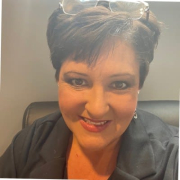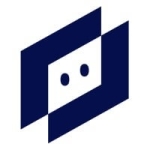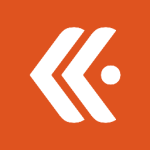What is our primary use case?
We use Auvik Network Management to monitor client sites for various network issues. Auvik provides us with a view of the entire network, including all connected devices. This allows us to visualize how these devices are interconnected and how data flows throughout the network.
How has it helped my organization?
A network topology map provides us with a near real-time picture of our network's activity. It constantly updates as scans run or new devices are added. Typically, within 30 seconds to a minute, the map reflects the new device, making it one of the most current representations of our network's state available.
The topology map is user-friendly. Nearly every element on the map is clickable, allowing us to zoom in on specific components with ease. This interactivity makes the map far more useful than a static image, as we can quickly drill down to the precise area we need to investigate.
Auvik's benefits were clear from the start. Previously, we lacked any tools to understand what was happening on our clients' networks. This made it difficult to work with potential customers. When visiting a site, we couldn't readily assess their needs and provide a quote for our services. Auvik's network discovery function was a game-changer. It revealed devices on customer networks they weren't even aware of, instantly justifying the investment. This level of visibility had been completely absent before. The previous tools we used were nowhere near as efficient. Additionally, Auvik's ability to monitor client sites and set up alerts provided invaluable insights, something else that was previously lacking. Overall, the value of Auvik was undeniable and immediate.
Auvik helps reduce the mean time to resolution of network issues. Auvik allows us to see exactly which device and port are experiencing issues. This significantly narrows down the problem area, especially in larger facilities. By pinpointing the exact switch and port, Auvik tells us precisely where to go to investigate and resolve the issue quickly, streamlining the process for the network team.
Auvik significantly reduces the time we spend on setting up networks, maintaining them, and resolving issues. Before using Auvik, our technicians had to perform lengthy site surveys. This involved the technician spending several hours at the customer's location, depending on the size of the site. During this time, the technician would physically examine network rooms, walk the entire building, and manually count the number of devices and their locations. This process required a significant amount of time analyzing the customer's site, including all the computers and other devices. In contrast, with Auvik, we can now map a complete network in under an hour. Auvik also automatically identifies the connected devices and the number of access points. This translates to a two-thirds reduction in the time a technician spends on-site gathering information.
What is most valuable?
The most valuable feature for us in Auvik is the network topology. This feature creates a visual map of all connected devices on the network, showing their location. This is incredibly helpful when we need to locate a specific device, as it significantly narrows down the search. Overall, the network topology is the functionality we utilize the most within Auvik.
What needs improvement?
The Auvik interface, while functional, doesn't feel as intuitive as some competing products. Compared to modern software, the design appears a bit dated. After using it for a couple of years, I've learned where things are located, but I still find myself occasionally clicking the wrong buttons because the layout isn't very logical. Overall, the interface could benefit from some improvements to make it more user-friendly.
The Ubiquiti line of network products is gaining significant popularity, but Auvik currently struggles to gather in-depth information from them. It's unclear whether this is due to a lack of communication between the two companies. It seems beneficial for both parties to explore a partnership to improve data availability. While Auvik emphasizes its close relationship with Ubiquiti, there's still an information gap compared to other vendors. It's difficult to say definitively if this is an issue with Auvik or Ubiquiti, but initiating contact between the right people at both companies could likely lead to a solution.
For how long have I used the solution?
I have been using Auvik Network Management for two years.
What do I think about the stability of the solution?
Auvik Network Management is stable. We have never encountered a stability issue.
What do I think about the scalability of the solution?
Auvik's scalability is very impressive. We haven't encountered any limitations on its capacity to handle our needs. In our experience, it seems to be adaptable for any size of network environment, from very small to extremely large.
How was the initial setup?
Auvik's deployment process was straightforward. Their clear instructions, broken down into three steps, made it easy to follow. The system wouldn't allow us to proceed until the current step was completed, ensuring we didn't miss anything. There may have been some initial bumps a few years ago, but a recent deployment we did just a couple of weeks back showcased a noticeably smoother process. It seems Auvik has continuously improved its deployment experience.
While deploying the system, two people were involved. The second person's role was to ensure we were all in agreement on the desired functionalities and configuration. This was especially important for the advanced configurations, which went beyond getting the system to a basic functional state. The advanced configurations, such as defining the types of alerts and ensuring they weren't overwhelming, required a collaborative effort. It took a couple of people to sit down, think through them carefully, and analyze what truly mattered to avoid generating meaningless alerts.
The first deployment of our system did take a couple of weeks. This was because we were still refining the alerts and simply didn't know what to expect. We were unsure how background noise would affect the system's ability to detect silence. As a result, the initial deployment took longer to get everything configured exactly how we wanted it. Now, however, subsequent deployments are much faster. Typically, a new site can be up and running within a couple of hours, depending on the specific setup and credentials required. Overall, the entire process from start to finish is now generally completed within two hours.
What about the implementation team?
The implementation was completed in-house.
What's my experience with pricing, setup cost, and licensing?
Auvik offers two publicly available pricing tiers, but there are also additional options that require contacting a sales representative. Despite this, Auvik seems to prioritize customer needs. Their pricing models are generally clear and competitive. In fact, Auvik can sometimes be more affordable than some of the bigger players in the market. Through conversations with their sales team, we found that Auvik is willing to work with customers to ensure they can get started with the software, even if it means offering a customized license that fits their budget. This customer-centric approach was valuable to us.
Which other solutions did I evaluate?
In our search for a network management solution, we explored various products, but none quite fit the bill. Existing options didn't offer the comprehensive functionality we needed. Ultimately, we chose Auvik because it combined several functionalities we desired.
One competitor, RapidFire Tools, offered some network discovery features. However, their access limitations were a concern. We needed a tool with deeper network access than what they provided, which wouldn't have been readily granted on our clients' websites. Another contender, Domotz, also emerged later, but their hardware requirement on the network was a deal-breaker for us.
Auvik, on the other hand, seemed to seamlessly work with any network-connected computer. Its scanning capabilities were far superior to both competitors. Additionally, the ability to map the network topology comprehensively without requiring extra hardware solidified our decision. We tested Domotz for three months and RapidFire Tools for a year. The year-long contract was the only option available. While both ran concurrently, our initial exposure to Auvik at an industry event presentation, sparked our interest.
Upon setting up the Auvik trial, we were impressed by the salesperson's ability to grasp our client needs quickly and demonstrate the tool's functionality effectively. This helped us realize the value proposition almost immediately. Auvik's superior feature set, compared to the others, stood out. The ease of setting up and getting started further solidified our choice. In fact, our team was convinced of Auvik's value before the trial even reached its halfway point. It was that good.
What other advice do I have?
I would rate Auvik Network Management eight out of ten.
Some critical devices on our network are not currently billed for because Auvik cannot monitor our Ubiquiti firewall. This lack of monitoring means we can't even tell if a device is up or down, which is crucial information. Fortunately, we've found some workarounds to gather basic information about these devices for our Auvik network monitoring system. The good news is that the support representatives have confirmed these workarounds won't incur any additional billing. They've even offered to help us implement them. While these devices won't be fully monitored through their standard system, the support team has gone the extra mile to ensure we can still gather some essential information about their status within our network.
Auvik is a self-updating system. Once we set it up, there's minimal ongoing maintenance required. The only time we typically need to revisit the software is when we add new equipment to the network. In those cases, we simply ensure Auvik recognizes and inventories the new devices. Otherwise, Auvik runs seamlessly in the background. We only interact with it again when an alert pops up, notifying us of a network issue that requires attention.
The most important advice I can offer is to be prepared for the learning curve associated with Auvik's interface. Navigating the interface and finding specific features can be the most challenging aspect initially. However, once you become familiar with the layout, Auvik's capabilities are extensive. While the interface might not be as intuitive or modern as some users expect, rest assured that Auvik can handle any network management task you need it to perform. Just be patient as you become acquainted with its functionalities.
Which deployment model are you using for this solution?
On-premises
Disclosure: PeerSpot contacted the reviewer to collect the review and to validate authenticity. The reviewer was referred by the vendor, but the review is not subject to editing or approval by the vendor.



















